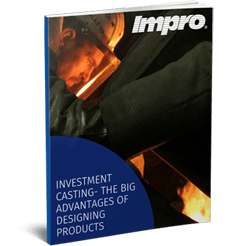The Value of Investment Casting (Part 1)
Freedom with Designs
Investment Casting can yield any required shape using almost any metal alloy; design functionality can be maximized due to the amount of materials to choose from. Various features can also be incorporated with the right mold. The most popular materials that are suitable for Investment Casting are stainless steel, carbon steel, copper, aluminum, and superalloys.
Advantages At-A-Glance:
-
- Excellent surface finish
- High dimensional accuracy
- Extremely intricate parts are castable
- Almost any metal can be cast
- No flash or parting lines
Value-Added Services:
- Engineering Service
- Machining
- Heat Treatment
- Surface Treatment
- Non-Destructive Testing
Investment Casting is the preferred process for creating complex castings as it allows for complex parts and components to be cast. Sections with thin walls and features, such as undercuts, can be cast with ease. Investment Casting can also produce a superior surface finish up to Ra 3.2 and achieve dimensional and geometrical accuracy to meet special requirements such as weight.
With Investment Casting, designs do not have to be altered to add different angles or taper. In addition to providing design flexibility for manufacturing complex, one-piece structures, this is an added advantage as it reduces secondary machining time and also drastically reduces material and processing cost.
Impro is able to meet material specification according to ASTM, SAE, AISI, ACI, DIN, EN, ISO, GB standards and is a trusted source for Investment Casting.
If you would like to know more, download our free eBook Investment Casting – The Big Advantages.
*Read Part 2 of our Investment Casting Series!
